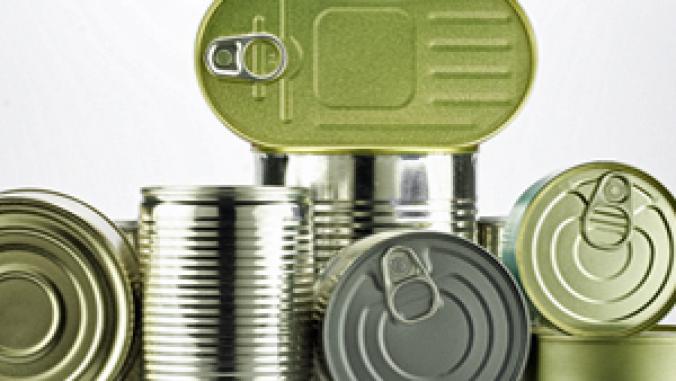Boeing Reports Double-Digit Progress in Managing Waste, Water Use
<p>Boeing's major U.S. operations diverted 73 percent of their nonhazardous solid waste from landfill in 2010, according to the company's latest environmental report, which details improvements in five areas in the past four years.</p>

Boeing has made absolute reductions in energy consumption, carbon emissions, water use, production of hazardous waste and waste sent to landfill in the United States, according to the latest environmental report from the aerospace and aviation company.
The Boeing 2011 Environment Report released yesterday shows improvement ranging from 5 percent to 26 percent in the five environmental metrics across a four-year period, from 2007 to 2010 inclusive. Boeing also reported year-over-year progress in the five categories.
The areas showing the greatest improvement were:
- Waste diversion. In 2010, the company diverted 73 percent of its nonhazardous solid waste from landfill, compared with 68 percent in 2009. From 2007 to 2010, the company's diversion rate improved 26 percent. In April, the Boeing 787 assembly plant in North Charleston, S.C., became the company's fourth zero-waste-to-landfill site and its first major commercial airplane production facility to attain "zero waste" status. The other zero-waste sites are a helicopter plant in Philadelphia, a Salt Lake City factory for fabricating commercial airplane parts and a strategic missile and defense systems facility in Huntsville, Ala.
- Hazardous waste. The amount of hazardous waste Boeing generated fell 15 percent from 2009 to 2010. From 2007 to 2010, hazardous waste generation dropped 23 percent.
- Water use. The firm reduced its water intake by 4.8 percent from 2009 to 2010 and charted an 11 percent decrease from 2007 to 2010.
Boeing's environmental performance goals for U.S. operations call for 25 percent reductions in the intensity of energy use, greenhouse gas emissions, water intake and hazardous waste generation from 2007 to 2012 -- with consumption and generation indexed to revenue. For example, the revenue-adjusted target for carbon emissions would compare the number of metric tons of CO2 generated per $1 million in revenue in 2007 with the metric tons of CO2 generated for each million in revenue for 2012.
At the time the original targets were set (an early version of the goals appears in the company's 2008 Environment Report), "Boeing projected that achieving these goals would equate to an approximate 1 percent reduction in greenhouse gas emissions, energy use, water intake and hazardous waste generation during a time of significant growth," the company said in this year's report.
Although growth in revenue has been uneven in the past four years, the company's environmental performance has steadily improved, resulting in absolute reductions that have exceeded the initial projection, as the chart below shows.

The only performance category that did not show improvement involved environmental fines. The report said the fines -- which shrank in 2008 and 2009, then ballooned in 2010 -- were largely due to settlements for storm water permit violations at Santa Susana in Southern California.
For decades, Santa Susana was the chief site of rocket engine testing for the country's major space programs and a home to atomics research. Boeing acquired about 2,400 acres of Santa Susana in 1996 and NASA owns slightly more than 450 acres of the site. Boeing has been cleaning up its acreage and plans to preserve it as open space.
Other developments highlighted in the report include:
- The rollout of long-awaited new aircraft. The Dreamliner 787 and the 747-8, scheduled to enter commercial service later this year, are designed to be more fuel-efficient, produce a smaller carbon footprint and be less noisy than the planes they will replace. With composite fuselage and wings, the Dreamliner 787 is designed to be 20 percent more fuel-efficient than airplanes of comparable size. The 747-8 is expected to deliver 16 percent better fuel economy, 16 percent lower carbon emissions and 30 percent less noise than the 747-400.
- A green plant in the South. In addition to its zero-waste designation, the South Carolina assembly site for the Dreamliner, one of Boeing's two 787 production lines in the U.S., is to be powered by renewable energy. Twenty percent is to be supplied by thin-film panels of a 2.6-megawatt solar power system on the 10-acre roof of the new Final Assembly Building on the South Carolina site and the balance is to be purchased from a renewable energy facility, Boeing says. The company is seeking LEED certification from the U.S. Green Building Council for the new construction on the site. Boeing's green building standard requires all new construction and major renovations at company-owned site to be designed to achieve at least LEED-Silver certification.
- Biofuel development. Earlier this spring in partnership with the École Polytechnique Fédérale de Lausanne in Switzerland, Boeing launched the Sustainable Biomass Consortium. The research initiative is aimed at gaining better alignment between voluntary standards and regulatory requirements for biomass that's used to create jet fuel and bio-energy for other sectors. Boeing is among the founding members of the Sustainable Aviation Fuel Users Group, an industry organization.
Boeing's 2011 Environment Report is available at www.boeing.com/environment.





